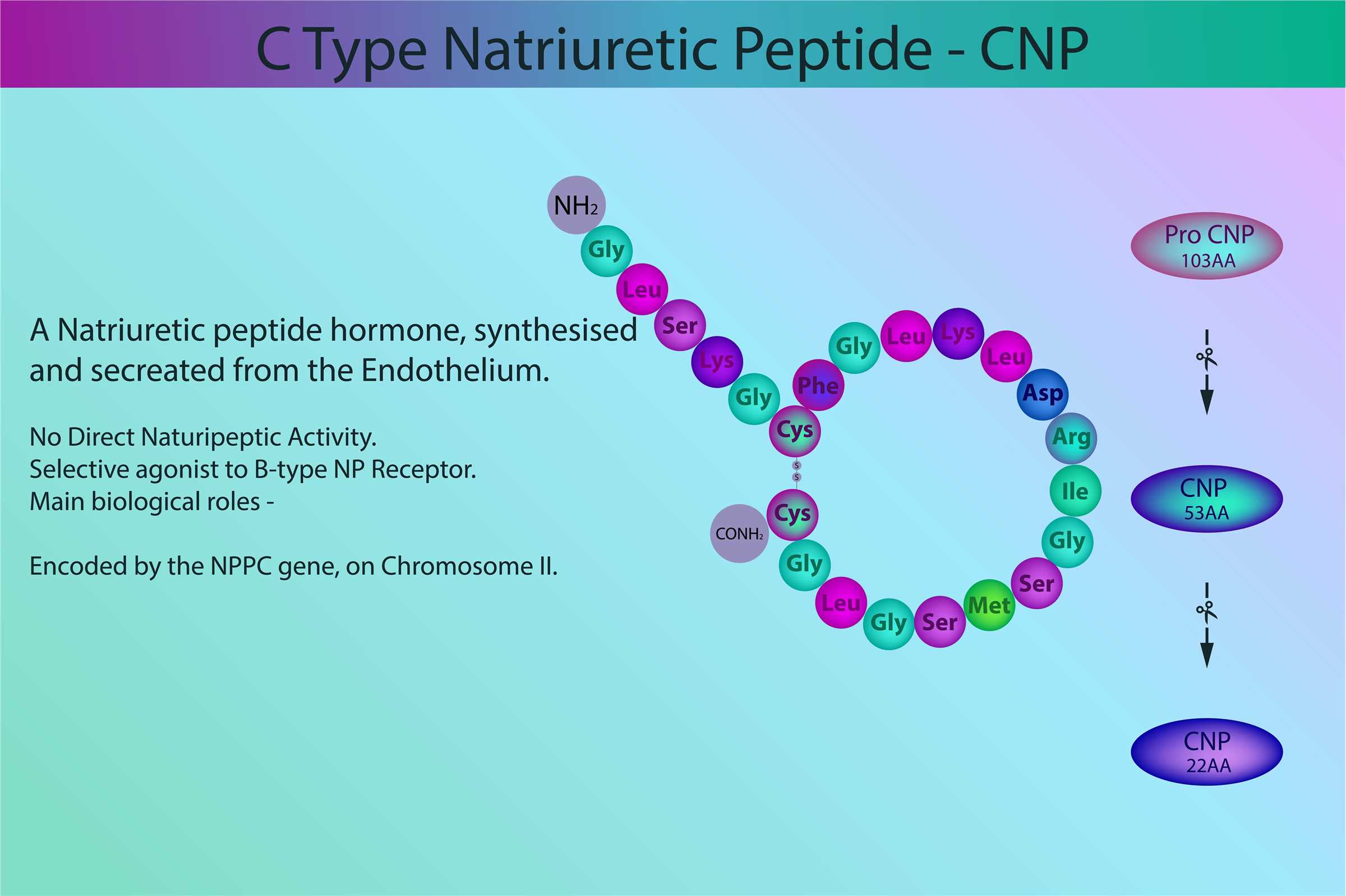| CAT# | Product Name | M.W | Molecular Formula | Inquiry |
|---|---|---|---|---|
| C32001 | C-Type Natriuretic Peptide (32-53), human | 2197.6 | C93H157N27O28S3 | |
| C32002 | C-Type Natriuretic Peptide, chicken | 2241.7 | C93H157N29O29S3 | |
| C32003 | Prepro-CNP (30-50), porcine, rat | 2125.4 | C87H153N33O29 | |
| C32004 | Prepro-CNP (1-27), rat | 2724.1 | C118H191N35O39 | |
| C32006 | (Tyr0)-C-Type Natriuretic Peptide (32-53), human, porcine, rat | 2360.8 | C102H166N28O30S3 |
C-Type natriuretic peptide (CNP) was first isolated from the pig brain by Sudoh et al in 1990. CNP is a polypeptide consisting of 22 amino acids. The CNP structure in the human brain is similar to that of the porcine brain, and the biologically active CNP polypeptide has a 22-amino acid residue at the C-terminus, called CNP-22. Many studies have shown that CNP is mainly distributed in the central nervous system, and its neurons have different distribution patterns in different kinds of animals.

As CNP is present in the central nervous system and is synthesized and secreted by vascular endothelial cells, intracellular cGMP is the major second messenger molecule that mediates the action of natriuretic peptides on target cells. CNP activates the guanylate cyclase linked to the plasma membrane by binding to a specific NP-B receptor on vascular smooth muscle cells of the target organ, promoting the accumulation of cGMP-dependent cGMP, leading to cGMP-dependent protein kinase phosphorylation. By reducing the intracellular calcium ion concentration, the vascular smooth muscle relaxes, thus regulating the local vascular tone and preventing vascular smooth muscle proliferation. Angiotensin 2, transforming growth factor (TGF), vascular endothelial growth factor (VEGF) and insulin can stimulate CNC secretion.
Studies have shown that plasma CNP levels 1 day after asphyxia increased significantly 3 and 7 days after asphyxia. The more severe the asphyxia, the higher the plasma CNP concentration. This indicates that the level of plasma CNP is related to the degree of asphyxia. Studies have shown that changes in the interaction between CNP and NO involve the maintenance of hypertension in spontaneously hypertensive model mice. Therefore, the mechanism and application of CNP are expected to be used for related treatment.
Reference